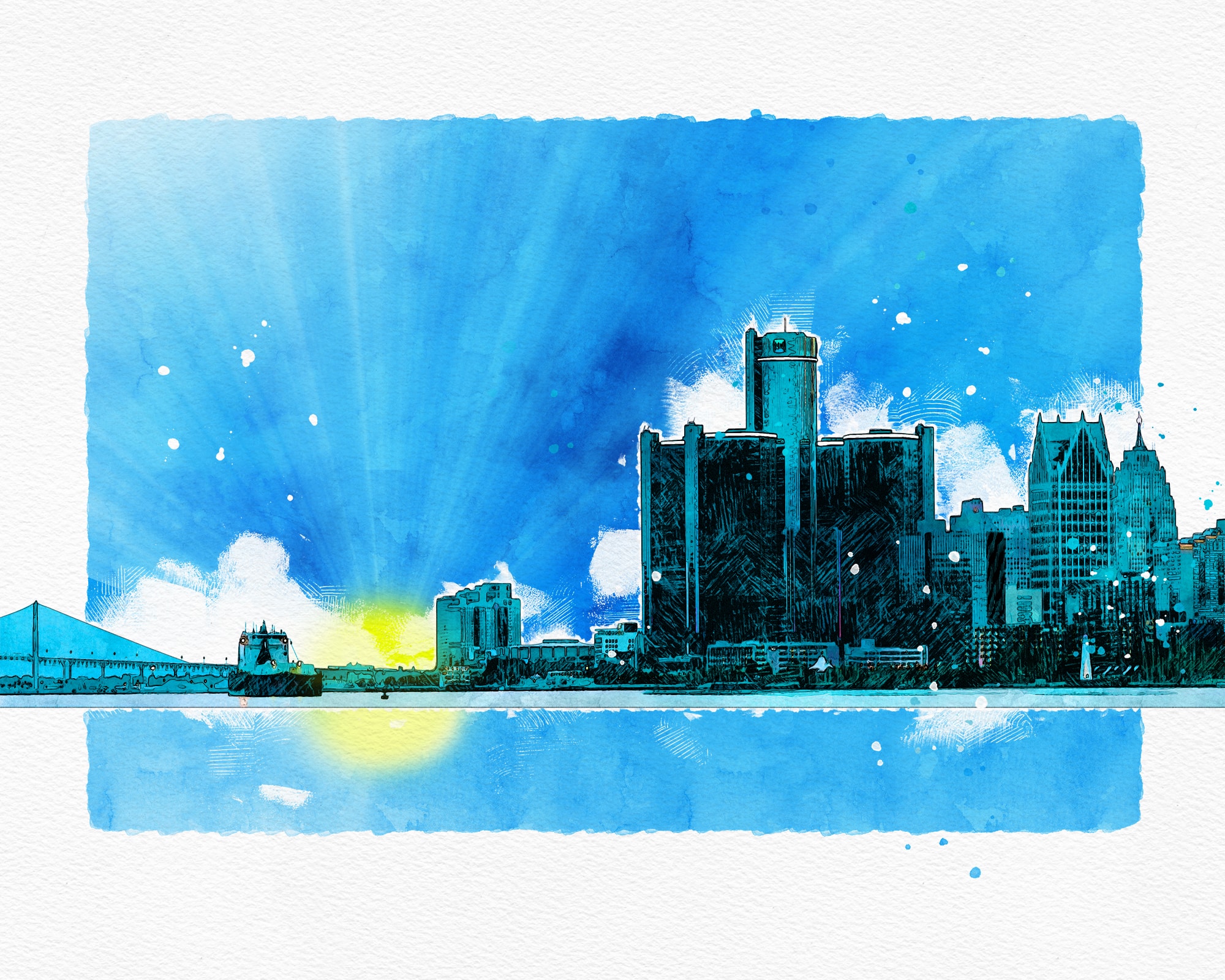The first thing you need to know is that Highland Park is not a little town tucked inside of Detroit. It is its own place; a tight-knit community surrounded on all sides by its neighbor, which just so happens to be the biggest city in the state of Michigan. Though Detroit is where Henry Ford first built the Model T, it is in Highland Park that the iconic car was mass-produced and where tens of thousands of people reported working each day for the promise of a $5 daily wage.
In less than three square miles, Highland Park boasts two National Historic Districts, is home to the Davison Freeway—among the first in the nation (if not the first)—and longtime Highland Park residents say, once managed a school system that rivaled the best in Detroit and the suburbs. Though closed since 2009, Highland Park High School remains a source of academic and athletic community pride. Given the opportunity to brag on the school in its heyday, Polar Bears arrive in full effect. Highland Park Community College is also significant; before its closure in 1996, it housed one of the most significant nursing and respiratory therapy programs in the region, perhaps the country.
But the fact remains that, especially to outsiders, the city appears a skeleton of its former self. City Hall could use some work. Highland Towers, a massive and once gleaming apartment community on Woodward Avenue is literally a shell, still standing after a suspicious fire ripped through it a little more than ten years ago. There are plenty of plans to turn the old Ford Model T plant into a museum, but today, the building sits vacant. And the site of the old high school and community college building, once activated by thousands of students, seems to be waiting for demolition.
After losing thousands of residents, the city has long struggled financially—famously being left in the dark after the local utility DTE Energy stripped the city of its streetlights and reportedly sold them for scrap in 2010.
But rather than mark the beginning of the end, these challenges have given Highland Park residents a start toward meaningful action. They’ve reignited a thriving community that is innovative, resourceful, and sustainable unto itself.
Take Soulardarity for instance, a resident-led nonprofit with a goal to relight Highland Park. Soulardarity’s primary action is to light the city with solar-powered street lights that also provide the public with free wifi.
The organization is a willing partner with city government, particularly in efforts to get DTE Energy to make reliability improvements to the city’s grid and properly compensate residents for long power outages, but its primary focus is on organizing residents to own the power that relights the community. Every street light installed by the nonprofit is fully paid for, typically funded by grassroots fundraising efforts.
The very first street light Soulardarity installed sits in Avalon Village, a sustainable eco-village founded by resident Shamayin Harris. Known throughout the community as Mama Shu, Harris created Avalon Village in direct response to the death of her son, Jakobi RA, who in 2007 was killed by a hit and run driver at the age of two. Since then, she has rooted an urban oasis that has garnered national attention. It is equipped with a Homework House to support the education of local students, a Goddess Marketplace to create opportunities for economic empowerment, an expanding community garden to fuel the neighborhood with good nutrition and the skills to grow their own food, and more. Jakobi RA Park hosts block parties, local concerts, music celebrations, and Hood Camp, a program developed to offer youth a chance to explore the outdoors through a weekend of camping right on Avalon Street.
It is a beacon of hope, much like Parker Village, a major multi-million dollar redevelopment project led by lifelong Highland Park resident and Soulardarity member Juan Shannon.
Based at the former Thompson Elementary School, Parker Village operates both an urban farm and growing aquaponics farm, with the intent to expand into an entirely solar-powered neighborhood, replete with 18 single-family homes, 8 flats and townhouses, and even the nation’s very first stand-alone, solar-powered cafe. Far better than a fantasy, Shannon’s vision for Parker Village takes an integrated systems approach, growing only as fast as it can, while engaging proven strategies for renewable energy, water conservation, waste reduction and food production that the community’s residents support and can replicate.
Audio Postcards
Shamayim ‘Mama Shu’ Harris is a mother, community activist, former school administrator, and the founder and CEO of Avalon Village, a sustainable eco-village on Avalon Street between Woodward and Second avenues in Highland Park.
Juan Shannon is the founder of Parker Village, an organization that is creating a model for sustainable neighborhood development in Highland Park by transforming a vacant school into a café, aquaponics garden, events and cultural center, and sustainable housing.

